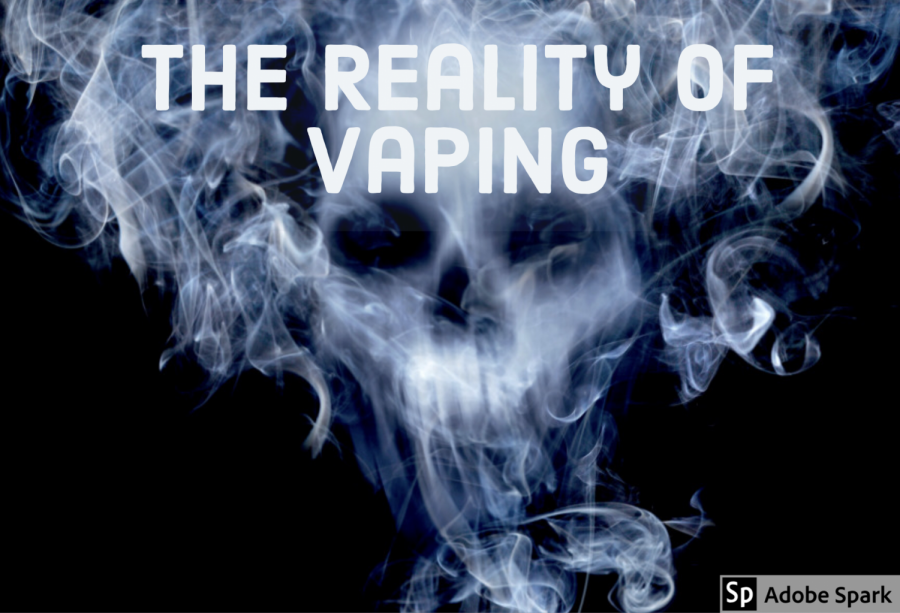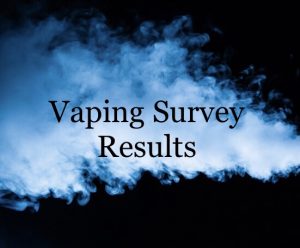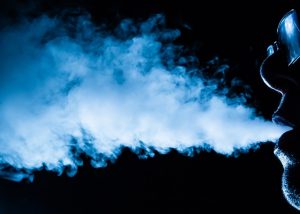Alarming teen vaping epidemic
School and government authorities look for responses to medical community findings
“I just remember feeling like absolute…nothing. Like I just couldn’t do anything,” Simah Herman, 18, said. “I couldn’t drink water. I couldn’t move. Like, I literally just wanted to crawl out of my skin.” ABC News reported on September 11 that Herman was hospitalized after using one Juul pod every day.
Simah Herman’s doctors at first thought that she had pneumonia. X-rays of her lungs showed the presence of a white liquid which turned out to be caused by total inflammation, preventing her from breathing.
CNN stated that on September 24, the ninth vaping related death in the US (of 12 reported so far) occurred in Kansas. “Governor Kelly urged people in her state to follow the CDC’s advice and stay away from e-cigarette products while what specifically is causing people to get sick is still being investigated.”
The Center for Disease Control (CDC) continues to monitor what is being called an epidemic. As of September 24 over 800 vaping related illnesses have been reported around the country.
Addressing why vaping has become such an urgent matter, the US Surgeon General issued a report noting that “current e-cigarette use increased 78% among high school students in the past year, from 11.7% in 2017 to 20.8% in 2018.” That equates to 3.6 million US youth, according to the report.
“We have adults that spend their entire lives trying to become unaddicted to nicotine, and now, we have kids getting into it. Even studies show that vapes have higher levels of nicotine in them than cigarettes,” said Mrs. Mary Truax, a WJ science teacher.
Similarly, Walsh Jesuit history teacher Miss Dana Chiuchiarelli cautioned, “People believe all of the false information about how ‘safe’ vaping is. It is not. Now there is more information starting to come into mainstream media about how dangerous it actually is. This is the ‘Are cigarettes bad?’ debate all over again!”
The Washington Post notes that even the Federal Drug Administration is unsure about the chemicals in vapes. As a result, there is no consistent “response from policymakers to growing alarm about the popularity of e-cigarettes among young people and fears that the products, which have yet to be vetted by the Food and Drug Administration, pose unknown health risks.” The same article explains that, to test the legality of banning vapes, Massachusetts has banned all vape products for four months.
“Bans on sales of flavored vaping products took effect this month in New York and Michigan, and the Trump administration said it plans to enact a similar regulation at the federal level. Flavored products have attracted particular scrutiny from policymakers who say they are getting kids hooked on nicotine,” The Post reports.
Junior Alex Reminder agreed. “Vaping flavors are appealing to teens. Flavors like watermelon and mint are like flavors of candy, and it makes us all want to try it…If the only flavor that was sold was tobacco, like what they are already trying to do, I believe teens wouldn’t be so interested in vaping. Tobacco sounds gross, and it’s not as nice as watermelon or mango or mint.”
In Ohio, some schools are installing vaping detectors as these concerns increase. The Columbus Dispatch explains that “As public health officials continue to warn about the use of e-cigarettes, more central Ohio school districts are considering adding monitors to discourage their use among minors.”
Junior Meghan Paul noted, “Vaping creates more problems than benefits. It ruins your future! Our bodies are being ruined by chemicals. We need to be focused on how we are going to live the rest of our lives.”
Mrs. Christy Ziemianski had an encouraging message for students: “You are young, healthy, vibrant, and smart. At WJ, we try to help you develop healthy minds, bodies, and spirits. Vaping works against our mission — it’s harmful.”













